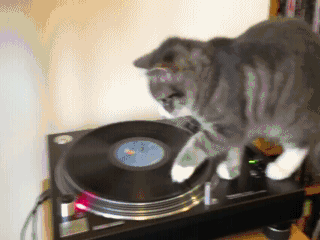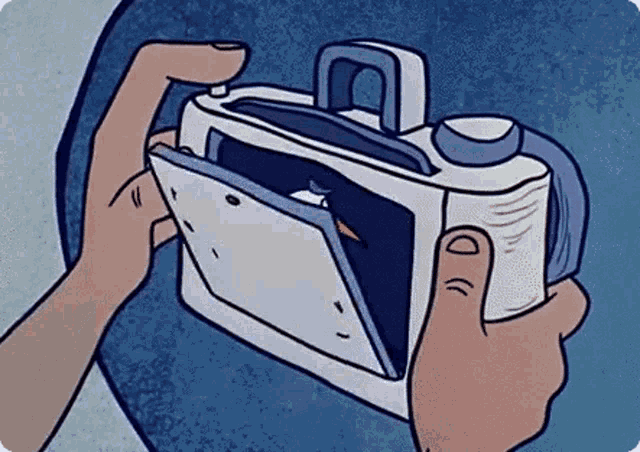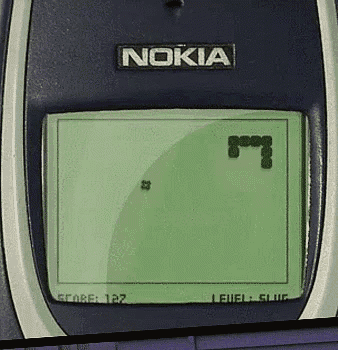
VERSIÓN ESPAÑOL:
¿Cómo va la gente de Blurt?
Les aúllo el chisme por el que seguro vienen a leer a mi cueva de meditación:
Tengo un vinilo que me regaló mi papá y que le perteneció a mi abuelo... para no hacer tan largo el cuento, ese vinilo ha pasado de generación en generación desde que existe un husky en la familia. Tiene algunas composiciones clásicas que me encantan y que hasta ahora escucho en formato digital porque ya esa reliquia la tengo como colección y recuerdo, además, no quiero que se vaya a dañar.
En los últimos años ha habido un notable regreso de tecnologías y formatos que alguna vez parecieron quedar obsoletos frente a los avances digitales. Los vinilos, cámaras analógicas y videojuegos retro han capturado la atención de nuevas generaciones, además de mantener su lugar especial en los corazones de quienes crecieron con ellos. Por ejemplo:
🐺 Vinilos son el renacer de la música analógica, surgieron en los años 40 y dominaron el mercado musical hasta los 80, cuando los casetes y más tarde los CDs ganaron popularidad debido a su portabilidad y facilidad de reproducción. Con la llegada de los formatos digitales (MP3, streaming), los vinilos prácticamente desaparecieron, pero ahora han comenzado a regresar porque los más entusiastas aprecian el sonido cálido y orgánico de los vinilos, que muchos consideran superior al audio comprimido de los formatos digitales. Comprar un disco, admirar su arte y colocarlo en un tocadiscos es un ritual que la música digital no puede ofrecer. Porque tengo una colección de ellos, sé que los vinilos se han convertido en objetos de deseo para coleccionistas y melómanos, incluso entre las generaciones más jóvenes que intentan seguir los pasos de lo que otros consideran vetusto.

🐺 Cámaras analógicas son la magia de lo impredecible, estas fueron durante mucho tiempo el estándar de la fotografía hasta los años 90, cuando las cámaras digitales comenzaron a reemplazarlas por su facilidad de uso, rapidez y capacidad de almacenar miles de imágenes, sin embargo, su estilo único, los colores, texturas y defectos naturales de las películas analógicas (como el grano y el desenfoque) ofrecen un encanto que los filtros digitales intentan imitar, pero no igualan. Las fotos capturadas con cámaras análogas tienen un ritmo más pausado porque con solo unas pocas exposiciones por rollo, los fotógrafos piensan más en cada toma, disfrutando de una experiencia más reflexiva al revelar lo que ese oscuro papel captó. La nostalgia y la autencididad se hacen presentes y están ganando algunas batallas contra la perfección digital actual porque no existen tantos filtros de Photoshop o de las nuevas inteligencias artificiales que dañan incluso la apariencia de un ser humano.

🐺 Retro gaming es el revival de los videojuegos clásicos de los 80 y los 90 porque aquellos desarrollados para consolas como Atari, NES, Sega Genesis y Game Boy, fueron pioneros en la industria del gaming actual. Con la llegada de consolas modernas, los gráficos avanzados y el juego en línea, muchos juegos retro quedaron relegados al olvido, pero por la simplicidad, el costo y la experiencia al jugar, estos clásicos de la industria, aunque técnicamente limitados, ofrecían experiencias centradas en la diversión, con mecánicas simples y adictivas... es que yo más me entretenía hasta con la serpiente del celular Nokia 1100 que con los actuales monstruos de la tecnología.

Aunque no debemos quedarnos en el pasado y seguir adelante, creo que quienes crecimos con estas consolas retro buscamos revivir esos momentos, mientras que las nuevas generaciones exploran los orígenes del gaming, y se ve que el número de seguidores y no solo de coleccionistas sigue en expansión, por eso es que empresas como
Nintendo y Sega han capitalizado esta tendencia lanzando versiones mini de sus consolas clásicas.
Pero, ¿por qué están regresando estos formatos?, la palabra se repite: nostalgia, porque es una fuerza de y con poder con la que muchas personas buscan revivir momentos felices del pasado o conectar con épocas que no vivieron, pero que perciben como más simples o auténticas, y más cuando la rebeldía ante lo inmediato se levanta para reconstruir lo accesible, lo físico, lo que es tangible, tal vez ya no tan barato porque las empresas juegan con el bolsillo de las emociones de sus clientes, pero que sigue teniendo un valor especial porque no solo vinilo, la película fotográfica y los cartuchos de videojuegos ofrecen una experiencia diferente que no ha cambiado con el transcurrir del tiempo.
La moda retro está en auge en todas las áreas, desde la ropa hasta la decoración. Estos formatos clásicos encajan perfectamente en esa estética y muchos críticos consideran que estos formatos tienen una dimensión artística que se pierde en lo digital porque un vinilo puede ser una pieza de arte; una foto analógica tiene un carácter único; un videojuego retro es una cápsula del diseño de su época, generando exclusividad en donde todo es reproducible como bucle infinito y cada disco de vinilo tiene pequeños defectos únicos, cada rollo de película revela sorpresas, y cada cartucho retro puede ser un hallazgo raro que en algunos casos llega a costar miles de dólares.

Lo retro se ha levantado en un espacio en donde todo parece girar en torno al concepto de la modernidad que pisotea las vivencias y artículos del pasado. Creo que lo clásico representa un acto de resistencia y protesta de que no todo necesita ser rápido, perfecto o ilimitado. Muchos de quienes recordamos y tenemos objetos que evocan la nostalgia pensamos no solo en el objeto en sí, sino en lo que representa: en la posibilidad de recuperar algo que parece perdido y sin remedio a componerse debido a la aceleración y al forzar del tiempo.
Creo que no se trata solo de nostalgia, aunque inevitablemente está presente, sino de una característica básica que nos vuelve humanos: la búsqueda de experiencias porque en el ritual de poner un vinilo, en la emoción de revelar un rollo de película o en la satisfacción de pasar un nivel en una consola retro, solemos encontramos pequeños momentos de autenticidad que escapan al ruido constante del precio elevado y la competencia desleal.
No quiere decir que tenemos que retroceder, sino rescatar lo esencial y mezclar lo mejor del pasado con las posibilidades del presente para proyectarnos hacia el futuro.
Ya los leo más tarde.
Chau.
ENGLISH VERSION:
How's it going, Blurt folks?
I am telling you the gossip that you are surely coming to read in my meditation cave:
I have a vinyl that my dad gave me and that belonged to my grandfather... to cut a long story short, that vinyl has been passed down from generation to generation since there has been a husky in the family. It has some classic compositions that I love and that I only listen to in digital format now because I already have that relic as a collection and I remember it, and I don't want it to get damaged.
In recent years there has been a notable comeback of technologies and formats that once seemed obsolete in the face of digital advances. Vinyl, analog cameras and retro video games have captured the attention of new generations, as well as maintaining their special place in the hearts of those who grew up with them. For example:
🐺 Vinyl is the rebirth of analog music, emerging in the 1940s and dominating the music market until the 1980s, when cassettes and later CDs gained popularity due to their portability and ease of playback. With the advent of digital formats (MP3, streaming), vinyl virtually disappeared, but it has now begun to make a comeback as vinyl enthusiasts appreciate the warm, organic sound of vinyl, which many consider superior to the compressed audio of digital formats. Buying a record, admiring its artwork, and placing it on a turntable is a ritual that digital music cannot offer. Because I have a collection of them, I know that vinyl has become an object of desire for collectors and music lovers, even among younger generations who try to follow in the footsteps of what others consider antiquated.

🐺 Analog cameras are the magic of the unpredictable. They were for a long time the standard of photography until the 90s, when digital cameras began to replace them due to their ease of use, speed, and ability to store thousands of images. However, their unique style, colors, textures, and natural defects of analog films (such as grain and blur) offer a charm that digital filters try to imitate, but cannot match. Photos captured with analog cameras have a slower pace because with only a few exposures per roll, photographers think more about each shot, enjoying a more thoughtful experience as they reveal what that dark paper captured. Nostalgia and authenticity are present and are winning some battles against current digital perfection because there are not so many Photoshop filters or new artificial intelligences that damage even the appearance of a human being.

🐺 Retro gaming is the revival of classic video games from the 80s and 90s because those developed for consoles such as Atari, NES, Sega Genesis and Game Boy, were pioneers in today's gaming industry. With the arrival of modern consoles, advanced graphics and online play, many retro games were relegated to oblivion, but due to their simplicity, cost and experience when playing, these industry classics, although technically limited, offered experiences focused on fun, with simple and addictive mechanics... I was more entertained even with the Nokia 1100 cell phone snake than with today's technological monsters.

Source
Although we should not stay in the past and move forward, I think that those of us who grew up with these retro consoles seek to relive those moments, while the new generations explore the origins of gaming, and it is seen that the number of followers and not only collectors continues to expand, which is why companies like Nintendo and Sega have capitalized on this trend by launching mini versions of their classic consoles.
But why are these formats coming back? The word is repeated: nostalgia, because it is a force of and with power with which many people seek to relive happy moments of the past or connect with times they did not live, but which they perceive as simpler or more authentic, and more so when rebellion against the immediate rises to rebuild what is accessible, what is physical, what is tangible, perhaps no longer so cheap because companies play with the pockets of their customers' emotions, but which continues to have a special value because not only vinyl, photographic film and video game cartridges offer a different experience that has not changed with the passage of time.
Retro fashion is booming in all areas, from clothing to decoration. These classic formats fit perfectly into that aesthetic and many critics consider that these formats have an artistic dimension that is lost in digital because a vinyl can be a piece of art; an analog photo has a unique character; a retro video game is a capsule of the design of its time, generating exclusivity where everything is reproducible as an infinite loop and each vinyl record has small unique defects, each film roll reveals surprises, and each retro cartridge can be a rare find that in some cases costs thousands of dollars.

Retro has emerged in a space where everything seems to revolve around the concept of modernity that tramples on the experiences and items of the past. I think that the classic represents an act of resistance and protest that not everything needs to be fast, perfect or unlimited. Many of us who remember and have objects that evoke nostalgia think not only about the object itself, but about what it represents: the possibility of recovering something that seems lost and hopelessly fixed due to the acceleration and force of time.
I think it is not just about nostalgia, although it is inevitably present, but about a basic characteristic that makes us human: the search for experiences because in the ritual of putting on a vinyl, in the excitement of developing a roll of film or in the satisfaction of passing a level on a retro console, we often find small moments of authenticity that escape the constant noise of high prices and unfair competition.
It does not mean that we have to go back, but rather to rescue the essential and mix the best of the past with the possibilities of the present to project ourselves towards the future.
I'll read them later.
Bye.
